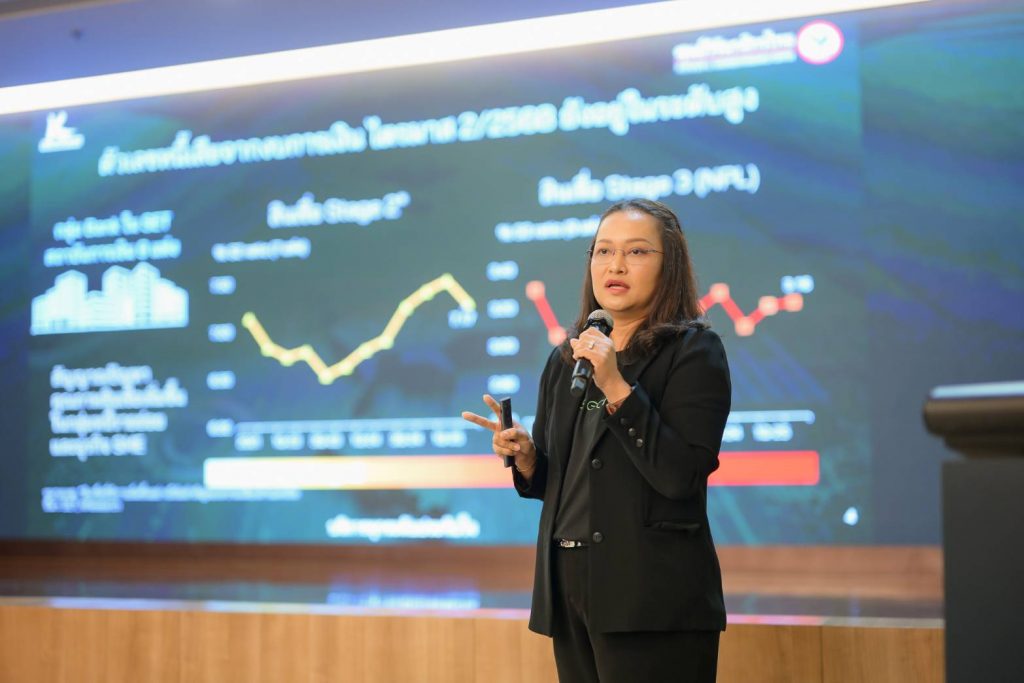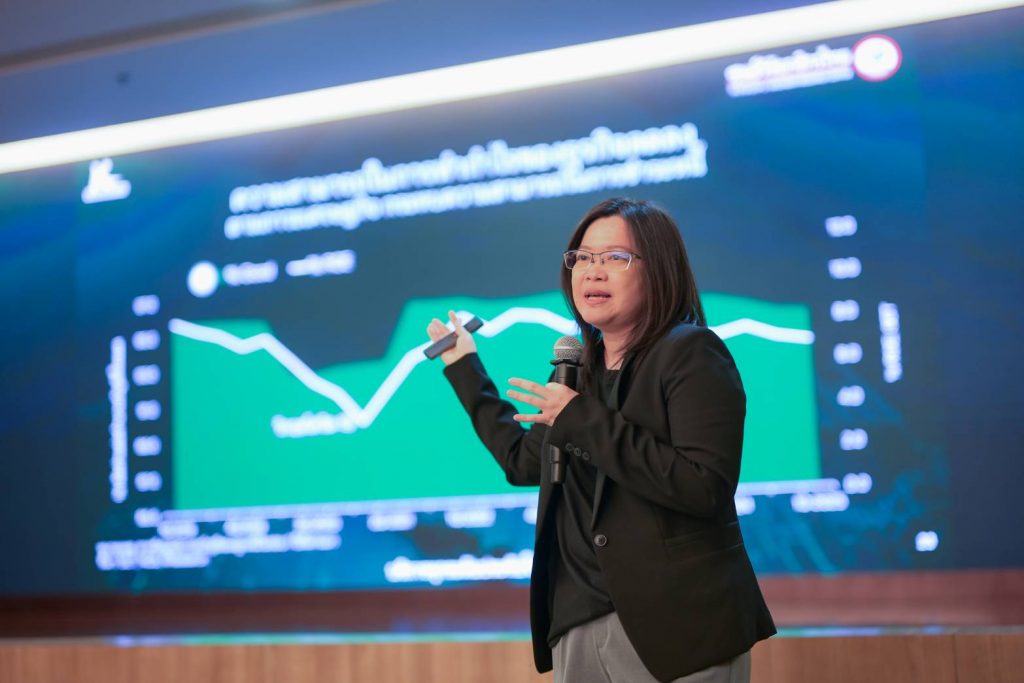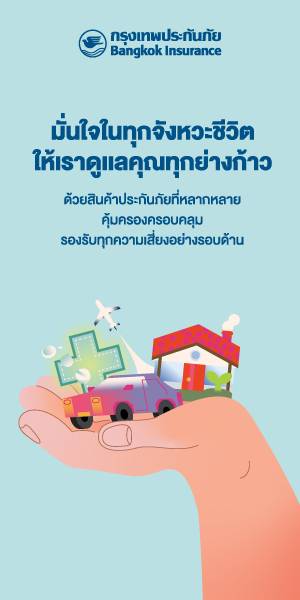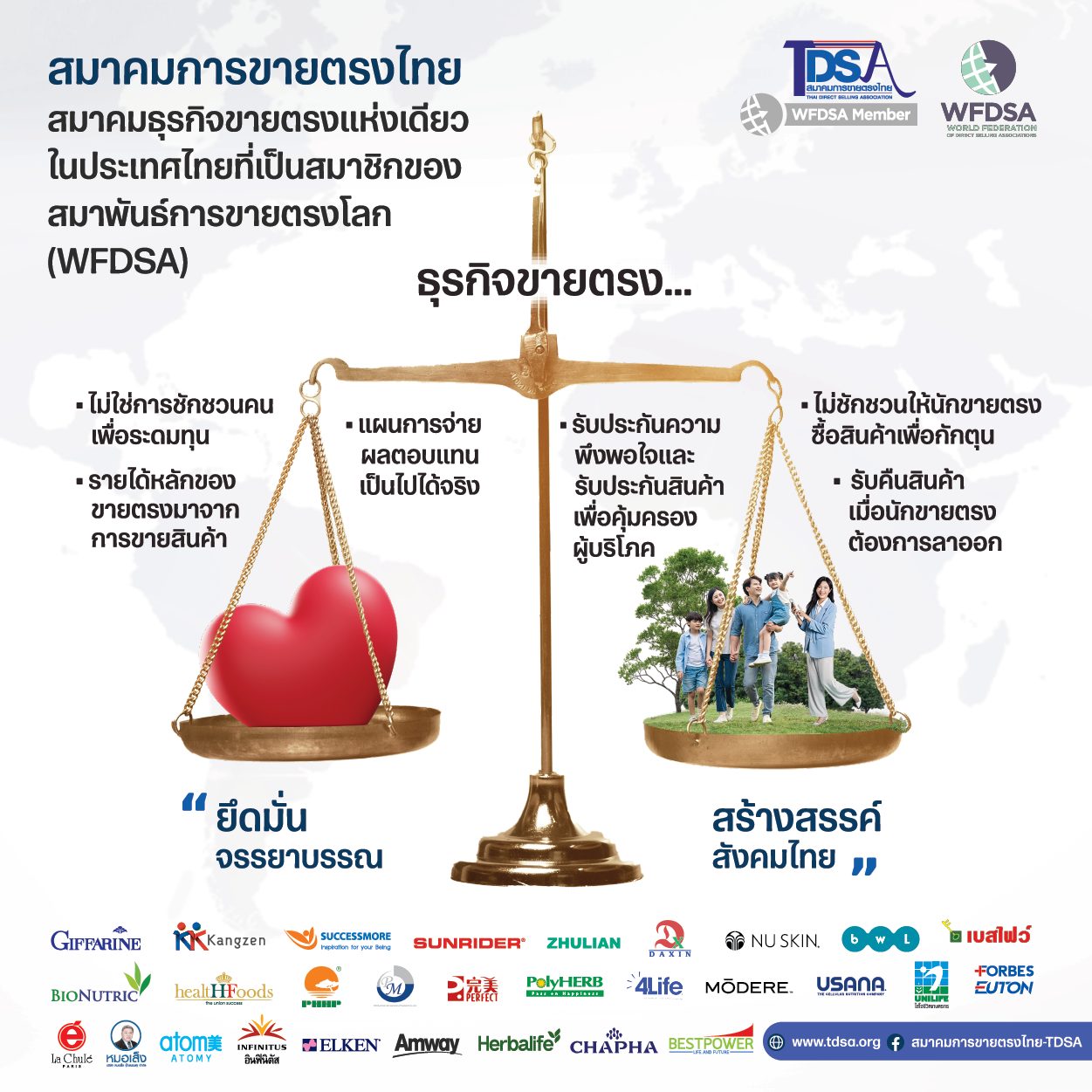ศูนย์วิจัยกสิกรไทยส่องข้อมูลบัญชีลูกหนี้ธุรกิจจากฐานข้อมูลของบริษัท เครดิตแห่งชาติ จำกัด (NCB) ไตรมาส 1/2568 พบลูกค้าธุรกิจยิ่งมีขนาดเล็ก ยิ่งมีปัญหาหนี้เอ็นพีแอลเพิ่มขึ้นชัดกว่ากลุ่มอื่น ๆ ขณะที่อานิสงส์จากการปรับโครงสร้างหนี้ตามเกณฑ์ Responsible Lending (RL) และแนวทางดูแลคุณภาพหนี้เชิงรุกของสถาบันการเงิน ทำให้สัดส่วนหนี้ค้างชำระ 1-30 วัน หรือ Stage 1 มีทิศทางที่ปรับตัวลดลงตั้งแต่ช่วงกลางปี 2567 เป็นต้นมา ย้ำการแก้ปัญหาหนี้ด้อยคุณภาพของธุรกิจที่ยั่งยืน ต้องอาศัยเงื่อนไขเศรษฐกิจมหภาคที่เอื้ออำนวย เพื่อช่วยให้ธุรกิจไทยแข่งขันได้ มีความสามารถในการทำกำไรในระยะยาว

นางสาวธัญญลักษณ์ วัชระชัยสุรพล รองกรรมการผู้จัดการ บริษัท ศูนย์วิจัยกสิกรไทย จำกัด กล่าวว่า ในไตรมาส 2/2568 ภาพรวมหนี้เสียของระบบธนาคารพาณิชย์ 9 แห่งที่เปิดเผยสู่ตลาดหลักทรัพย์ฯ มีเอ็นพีแอลที่ขยับสูงขึ้นเล็กน้อยจากไตรมาสก่อนหน้า ขณะที่หากเจาะลึกฐานข้อมูลบัญชีลูกหนี้ธุรกิจของบริษัท ข้อมูลเครดิตแห่งชาติ จำกัด (NCB) ซึ่งเป็นข้อมูลไตรมาส 1/2568 พบว่า แม้ทิศทางหนี้ที่มีปัญหา (Stage 2 และ Stage 3) จะทรงตัวจากช่วงปลายปี 2567 แต่ก็เพิ่มขึ้นเล็กน้อยจากไตรมาส 2/2566 ซึ่งเป็นช่วง 1 ปีนับจากมีการเปิดประเทศหลังโควิด
นอกจากนี้ ลูกค้าธุรกิจยิ่งมีขนาดเล็ก ยิ่งมีปัญหาหนี้เอ็นพีแอลเพิ่มขึ้นชัดกว่ากลุ่มอื่น ๆ โดยในกลุ่ม Super Micro เอ็นพีแอลมีสัดส่วนสูงถึง 14.81% ของสินเชื่อรวม ตามมาด้วยกลุ่ม Micro ที่ 12.11% และกลุ่มธุรกิจขนาดเล็ก ที่ 9.75% ในขณะที่กลุ่มธุรกิจขนาดกลางและใหญ่ จะอยู่ที่ 6.51% และ 1.37% ตามลำดับ อย่างไรก็ตาม มาตรการปรับโครงสร้างหนี้ตามเกณฑ์ Responsible Lending (RL) และแนวทางดูแลคุณภาพหนี้เชิงรุกของสถาบันการเงิน ทำให้สัดส่วนหนี้ค้างชำระ 1-30 วัน มีทิศทางที่ปรับตัวลดลงตั้งแต่ช่วงกลางปี 2567 เป็นต้นมา

นายกฤษฏิ์ แก้วหิรัญ นักวิจัยอาวุโส บริษัท ศูนย์วิจัยกสิกรไทย จำกัด เปิดเผยว่า จากข้อมูลคุณภาพหนี้จำแนกตามประเภทธุรกิจพบว่า ธุรกิจที่เชื่อมโยงกับกำลังซื้อของตลาดในและต่างประเทศ เช่น ภาคการผลิตและกลุ่มที่พักแรม ความน่ากังวลจะอยู่ที่ธุรกิจขนาดใหญ่ที่มีสัดส่วนหนี้ค้างชำระเกิน 30 วันขึ้นไป อยู่ในระดับสูงที่สุด และส่วนที่เป็นธุรกิจเอสเอ็มอีรายเล็ก-ย่อย เริ่มเห็นภาพหนี้ค้างชำระที่เพิ่มขึ้น ขณะที่ธุรกิจที่เชื่อมโยงกับกำลังซื้อของตลาดในประเทศ เช่น ธุรกิจค้าส่งค้าปลีก พบว่าคุณภาพหนี้ที่ด้อยลงในกลุ่มเอสเอ็มอีรายเล็ก-ย่อยในช่วงก่อนหน้านี้ ได้ขยายมาสู่ธุรกิจขนาดกลางมากขึ้น ส่วนธุรกิจก่อสร้างและอสังหาริมทรัพย์ ภาพลบจะขยายมาถึงธุรกิจขนาดใหญ่ด้วย ซึ่งด้วยแนวโน้มเศรษฐกิจที่มีความไม่แน่นอนสูงขึ้น ทั้งจากผลของการขึ้นภาษีนำเข้าของสหรัฐฯ ที่กระทบการส่งออก และภาพกำลังซื้อในประเทศที่ซบเซา อาจทำให้แนวโน้มความสามารถในการชำระหนี้ของประเภทธุรกิจต่าง ๆ ข้างต้น มีโอกาสถดถอยลงอีกในไตรมาสที่เหลือของปีนี้

ดร.กาญจนา โชคไพศาลศิลป์ ผู้บริหารงานวิจัย บริษัท ศูนย์วิจัยกสิกรไทย จำกัด กล่าวว่า ผลจากการจัดกลุ่มบัญชีสินเชื่อธุรกิจใหม่ตามลักษณะพฤติกรรมการชำระหนี้ของลูกหนี้ในรอบหนึ่งปีที่ผ่านมา ออกเป็น 4 กลุ่ม ประกอบด้วย สถานะปกติ (Good) เริ่มไม่ปกติ (Newly Impaired) ดีสลับแย่ (On-Off) และ มีปัญหารุนแรง (Distressed) พบว่า 95% ของจำนวนบัญชีสินเชื่อธุรกิจ ยังจัดอยู่ในกลุ่มสถานะปกติ แต่จุดที่น่าสนใจคือ สัดส่วนจำนวนบัญชีที่จัดอยู่ในกลุ่มสถานะปกตินี้เริ่มทยอยลดลงในช่วงหลังโควิด ขณะที่ กลุ่มดีสลับแย่และกลุ่มที่มีปัญหารุนแรง เพิ่มสูงขึ้น
ทั้งนี้ ภาพดังกล่าว สะท้อนผลกระทบจากปัญหาเศรษฐกิจหลายระลอกที่กระทบความสามารถในการทำกำไรของธุรกิจไทย โดยธุรกิจยิ่งเล็ก ยิ่งมีสัดส่วนของบัญชีสินเชื่อกลุ่มสถานะปกติลดลงเมื่อเวลาผ่านไป นอกจากนี้ แม้การปรับโครงสร้างหนี้จะมีส่วนช่วยชะลอการไหลลงไปสู่ชั้นหนี้เสีย แต่การปรับโครงสร้างหนี้ จะ ‘มีประสิทธิผลที่สุด’ ในการช่วยฟื้นธุรกิจ ก็ต่อเมื่อเข้าไปดูแลตั้งแต่ธุรกิจ ‘เริ่ม’ มีสัญญาณการค้างชำระ ไม่ใช่เข้าไปดูแลหลังจากที่กลายเป็นเอ็นพีแอลไปแล้ว เพราะโอกาสการฟื้นตัวของหนี้เอ็นพีแอลกลับมาสู่การจัดชั้นที่ดีขึ้น (ภายในกรอบระยะเวลา 1 ปีหลังจากปรับโครงสร้างหนี้) จะมีไม่ถึง 10%
ศูนย์วิจัยกสิกรไทยเสนอแนะเพิ่มเติมว่า ทางการไทยควรจัดวางมาตรการดูแลหนี้ให้เหมาะสมกับลักษณะการชำระหนี้ของแต่ละกลุ่มลูกค้า โดยอาจเพิ่มนโยบายสนับสนุนการปรับเงื่อนไขการชำระหนี้ชั่วคราวให้กับลูกค้าปกติที่ยังไม่ผิดนัดชำระหนี้และเล็งเห็นปัญหาของธุรกิจตนตั้งแต่เนิ่น ๆ รวมถึงอาจเตรียมทำโครงการ Asset Warehousing รอบใหม่ อันถือเป็นมาตรการเชิงรุกก่อนที่ลูกหนี้จะกลายเป็นเอ็นพีแอล ขณะที่ เมื่อลูกหนี้กลายเป็นเอ็นพีแอลแล้ว สิ่งที่ควรทำคือส่งเสริมกระบวนการนอกศาล (Out-of-Court Workouts) เช่น ตีโอนทรัพย์จบหนี้ โดยทางการสามารถช่วยสนับสนุนผ่านการลดค่าธรรมเนียมที่เกี่ยวข้องได้ อาทิ ค่าธรรมเนียมการโอนที่เกี่ยวข้องกับสิ่งปลูกสร้างและที่ดิน เป็นต้น
นอกจากนี้ เนื่องจากเมื่อลูกหนี้มีวันค้างชำระนานขึ้น โอกาสจะตกชั้นลึกลงย่อมมีมากกว่าการฟื้นคืนชีพมาเป็นหนี้ดี ดังนั้น หากกระบวนการทางกฎหมายมีระยะเวลาพิจารณาคดีทางกฎหมายที่เร็วขึ้น ก็น่าจะช่วยให้ลูกหนี้และเจ้าหนี้เห็นความชัดเจนเร็วขึ้น ลูกหนี้จะได้เริ่มธุรกิจใหม่เร็วขึ้นด้วย รวมถึงควรเพิ่มทางเลือกให้ลูกหนี้ผ่อนสินทรัพย์รอการขายของตนเองได้เป็นลำดับแรก ๆ ซึ่งเท่ากับเป็นการเปิดโอกาสให้กับลูกหนี้ที่ฟื้นฟูตัวเองได้ไว สามารถกลับมาเป็นเจ้าของทรัพย์เดิมได้ด้วยเช่นกัน อย่างไรก็ตาม แนวทางแก้หนี้ต่าง ๆ ดังกล่าว เป็นการฟื้นฟูธุรกิจเฉพาะหน้าเท่านั้น การแก้วังวนของปัญหาหนี้ด้อยคุณภาพของธุรกิจที่ถาวรขึ้น ต้องอาศัยเงื่อนไขเศรษฐกิจมหภาคที่เอื้ออำนวย เพื่อช่วยให้ธุรกิจไทยแข่งขันได้ มีความสามารถในการทำกำไรในระยะยาว จึงจะเป็นการจัดการอย่างยั่งยืนแท้จริง
National Credit Bureau data shows that debt restructuring efforts have helped ease problems related to non-performing business loans, according to KResearch
KASIKORN RESEARCH CENTER (KResearch)’s analysis on the commercial loan database from the National Credit Bureau (NCB) for the first quarter of 2025 shows that smaller businesses have seen a more pronounced increase in non-performing loans (NPLs) compared to other groups. Meanwhile, debt restructuring efforts under the Responsible Lending (RL) guidelines and proactive asset quality management by financial institutions have helped the proportion of overdue loans for 1–30 days, or Stage 1, to decline since mid-2024. A sustainable resolution to non-performing business loans requires favorable macroeconomic conditions to help Thai businesses remain competitive and maintain long-term profitability.
Ms. Thanyalak Vatcharachaisurapol, KResearch Deputy Managing Director, said that overall non-performing loans (NPLs) of nine commercial banks listed on the Stock Exchange of Thailand in the second quarter of 2025 increased from the previous quarter. Meanwhile, an analysis on the NCB database for the first quarter of 2025 shows that although Stage 2 and Stage 3 of business loans remained stable compared to the end of 2024, they had increased slightly compared to the second quarter of 2023, or one year after the country’s reopening after COVID-19. Moreover, smaller businesses saw a more pronounced increase in NPLs compared to other groups, with the super micro segment having the highest proportion of NPLs at 14.81 percent of total loans, followed by 12.11 percent in the micro segment and 9.75 percent in the small business segment. For the medium and large business segments, the ratios were 6.51 and 1.37 percent, respectively. However, debt restructuring measures under the Responsible Lending (RL) guidelines, along with proactive debt quality management by financial institutions, have helped reduce the proportion of overdue loans for 1-30 days since mid-2024.
Mr. Grid Kaewhiran, KResearch Senior Researcher, said an analysis of debt quality by business type shows that businesses linked to domestic and international purchasing power, such as manufacturing and accommodation, have overdue loans of more than 30 days. The main concern, however, is with large-sized businesses because they have the highest proportion of overdue loans of more than 30 days. Small and micro SMEs have also seen a rise in unpaid loans. For businesses linked mainly to domestic purchasing power, such as wholesale and retail trade, the deterioration in asset quality seen previously in small and micro SMEs has now spread to medium-sized businesses. In the construction and real estate sectors, this negative picture is prevalent in large businesses as well. Amid increased economic uncertainty due to the impacts of the US import tariff hike on exports and sluggish domestic purchasing power, there is a heightened risk that the debt repayment ability of these businesses could decline further during the rest of this year.
Dr. Kanjana Chockpisansin, Head – Research at KResearch, said that based on the reclassification of business loan accounts according to borrowers’ repayment behavior over the past year, the accounts fall into four categories: Good, Newly Impaired, On-Off, and Distressed. As evidenced, 95 percent of all business loan accounts remain in ‘Good’ status. However, a notable point is that the number of accounts in the ‘Good’ category has gradually declined since the post-pandemic period, while the proportion of accounts classified as ‘On-Off’ and ‘Distressed’ has increased. This trend reflects the impacts of multiple economic headwinds on the profitability of Thai businesses, with a sharper decline seen in Good-status loan accounts of small enterprises over time. Moreover, while debt restructuring can help slow the deterioration into non-performing loans (NPLs), it is most effective in reviving businesses only when implemented at the early signs of overdue repayments – not after such overdue payments have already turned into NPLs. This is because the likelihood of NPLs being reclassified as performing within one year after restructuring is less than 10 percent.
KResearch added that relevant authorities should introduce debt relief schemes tailored to the repayment ability of each customer segment. This could include a policy to temporarily adjust repayment terms for Good-status borrowers who have not yet defaulted but foresee business difficulties early on. Additionally, preparation for a renewed asset warehousing program should be considered as a proactive measure to prevent debts from deteriorating into NPLs. Once debts become NPLs, the focus should shift to promoting out-of-court workouts, such as the transfer of assets to settle debt. Relevant authorities could support this process by reducing related fees, such as those associated with the transfer of buildings and land.
Moreover, if overdue payments are prolonged, the likelihood of further deterioration is higher than recovery to good standing, expediting legal proceedings could help both debtors and creditors reach clarity sooner, allowing debtors to restart their businesses more quickly. Additionally, priority should be given to allowing debtors to gradually repay for their non-performing assets (NPAs), which would effectively offer opportunities for debtors who recover quickly to reclaim their original assets. However, such debt resolution measures provide only short-term business recovery. To permanently break the cycle of NPLs, favorable macroeconomic conditions are essential to enhance Thai businesses’ competitiveness and long-term profitability. Only then can the problem be sustainably resolved.
































































